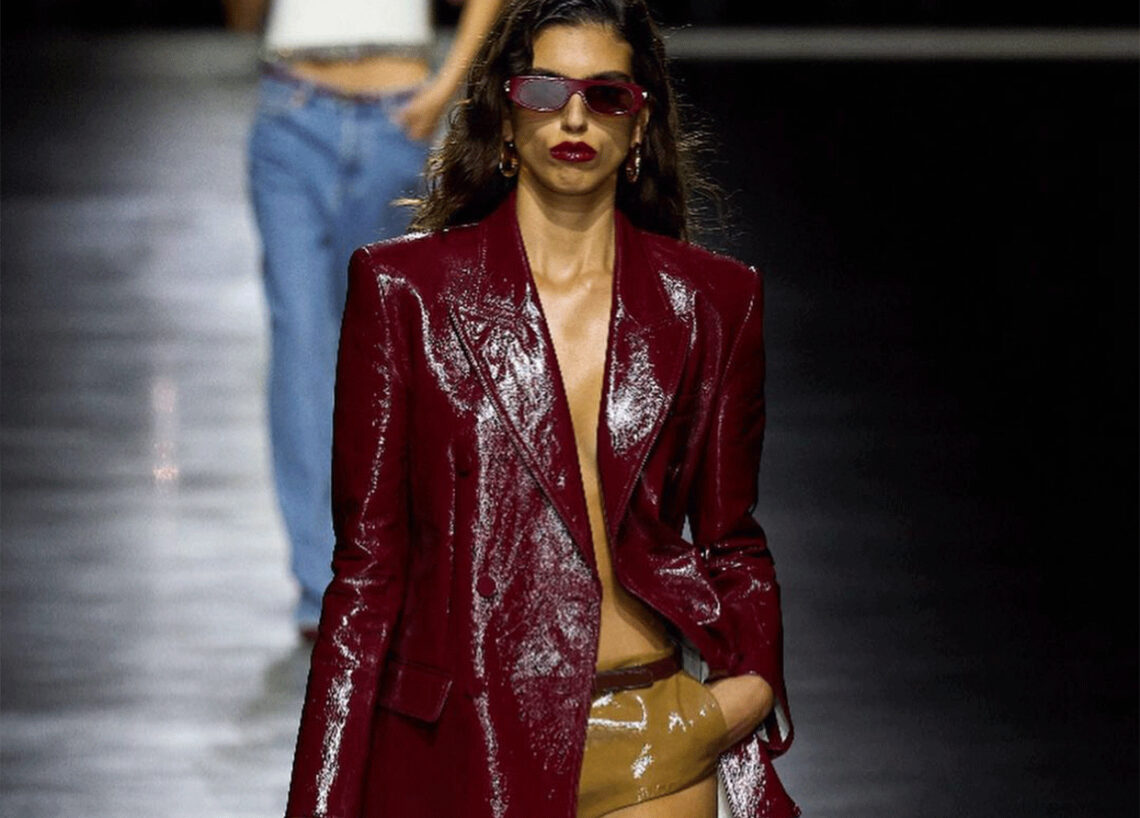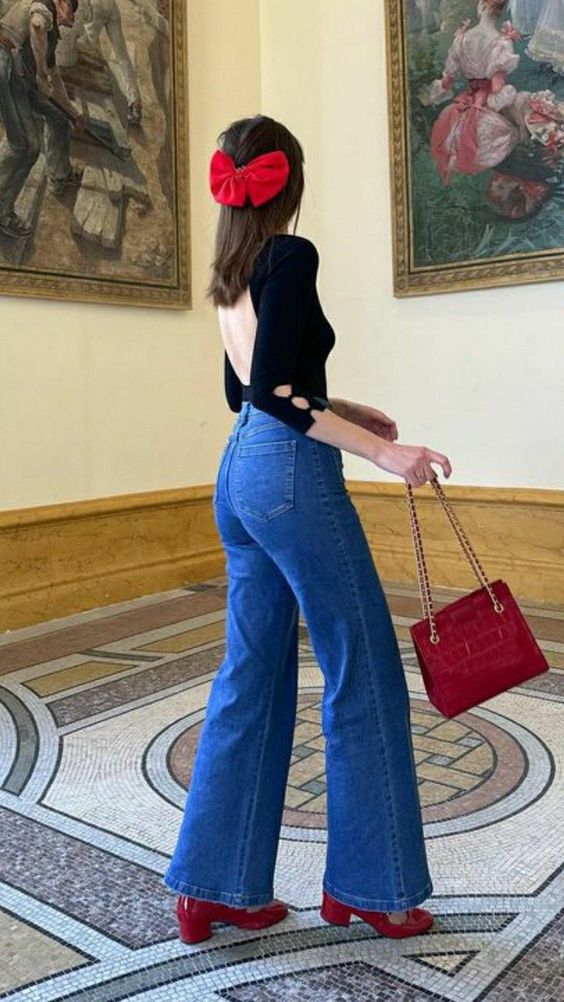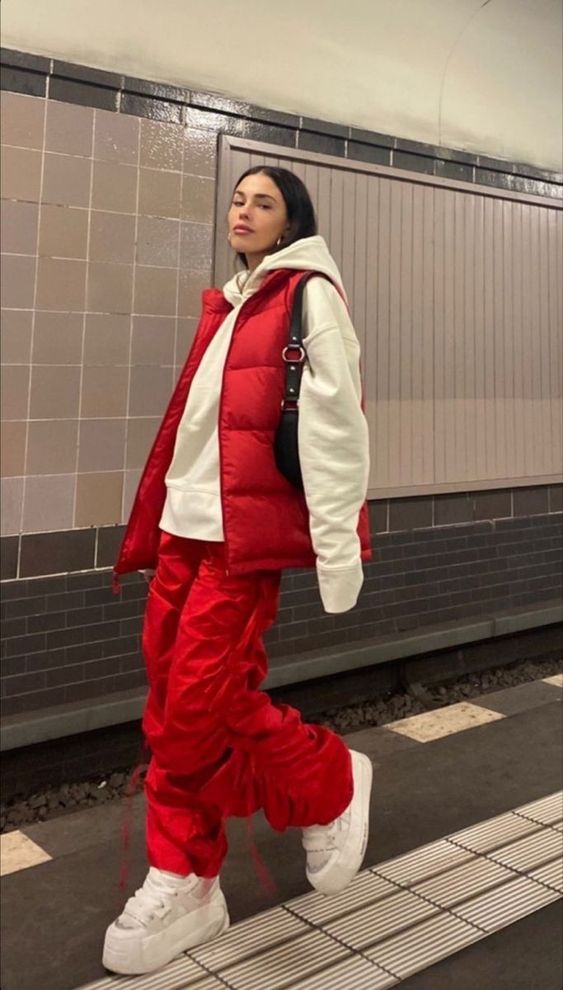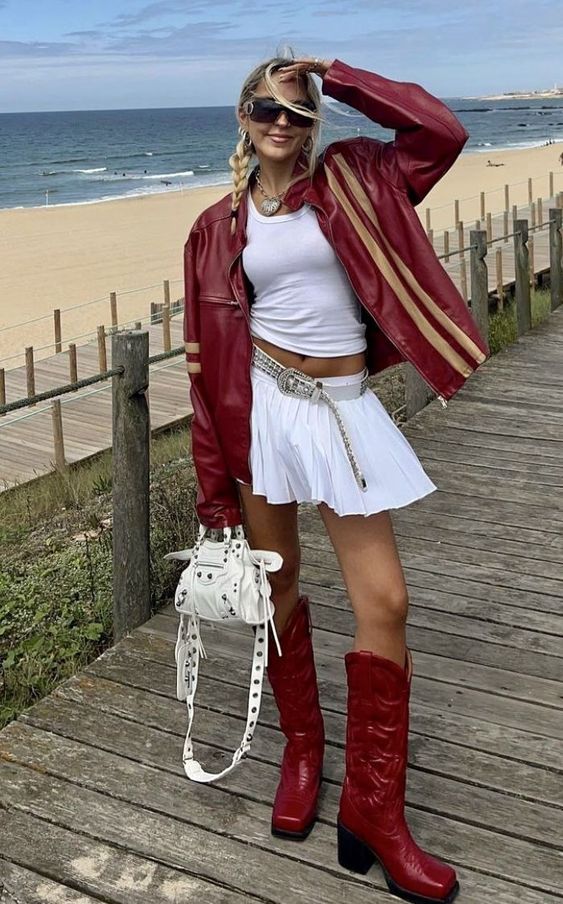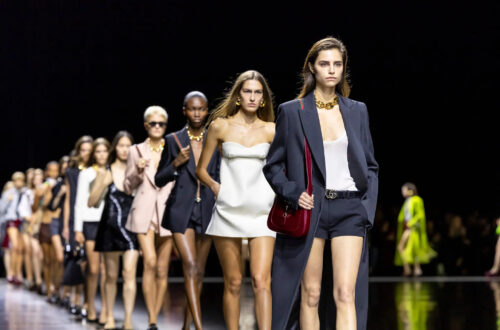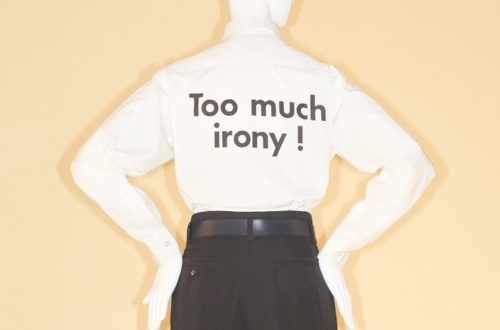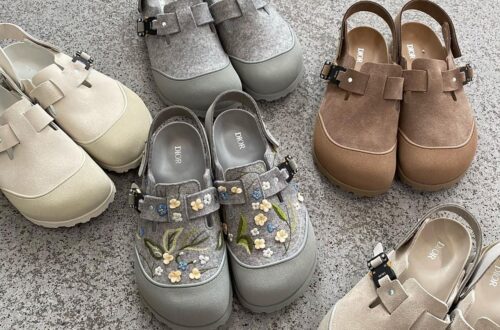
From social media microtrends to runways, one color seems to have taken over our wardrobes this fall: cherry red. This cool, intense shade of red has completely colonized our collective sense of style, from hair to accessories, passing through makeup and nails, but the real question is: where does this wave of red really come from? The cherry red trend follows unusual dynamics with respect to other color trends in the past: while we can easily identify a certain era with a specific color palette, the cases in which only one color takes over are very limited. One example is Barbie pink, which has seen an incredible rise last summer, and many believe that this hot pink shade was actually a catalyst for the cherry red trend this fall. In a way, we could say that cherry red is the “fall twin” of the brighter, and more summery, Barbie pink. However, what many might ignore is that the popularization of cherry red began many months before the Barbie movie even came out: Jacquemus’ Fall RTW 2023 collection was dominated by this shade, the only pop of color proposed by the designer in a sea of whites and occasional blacks.
In recent runways, we have seen a great amount of bold monochrome looks that have certainly sustained the spread of bolder colors at all levels within the fashion industry. An example is the Valentino FW22 collection by Pierpaolo Piccioli: the collection presented every outfit in a bold hue of fuschia, a powerful statement that contributed to the establishment of this shade as Valentino’s signature color. However, this was not the only example of monochrome outfits taking over collections in the last couple of years, with, among many others, Max Mara and Bottega Veneta bringing monochrome looks to their SS22 runways.
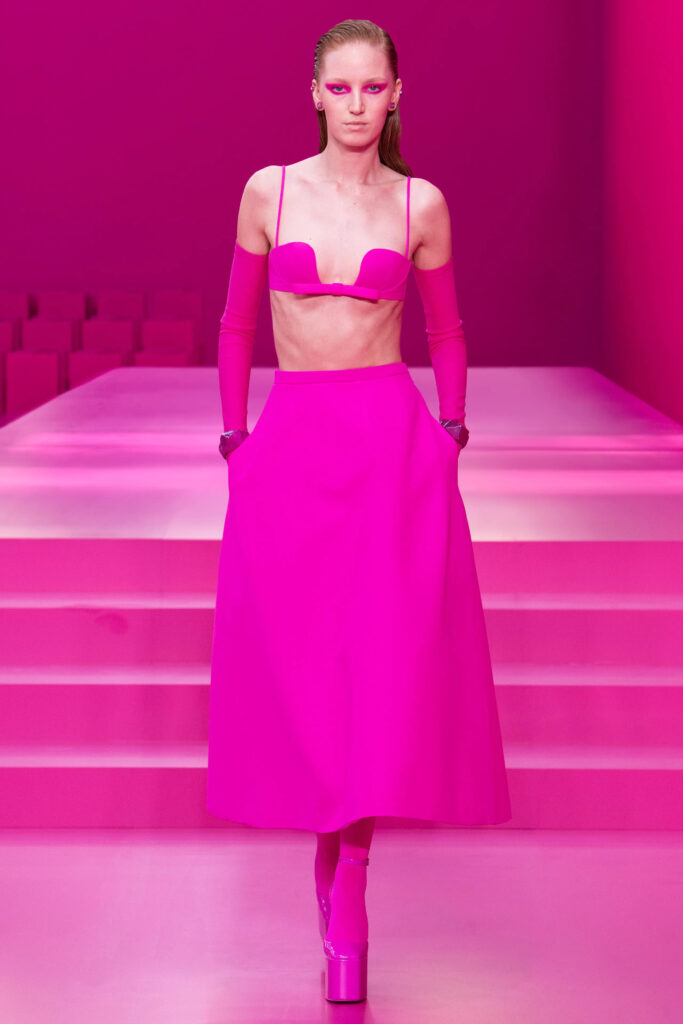
Valentino SS22 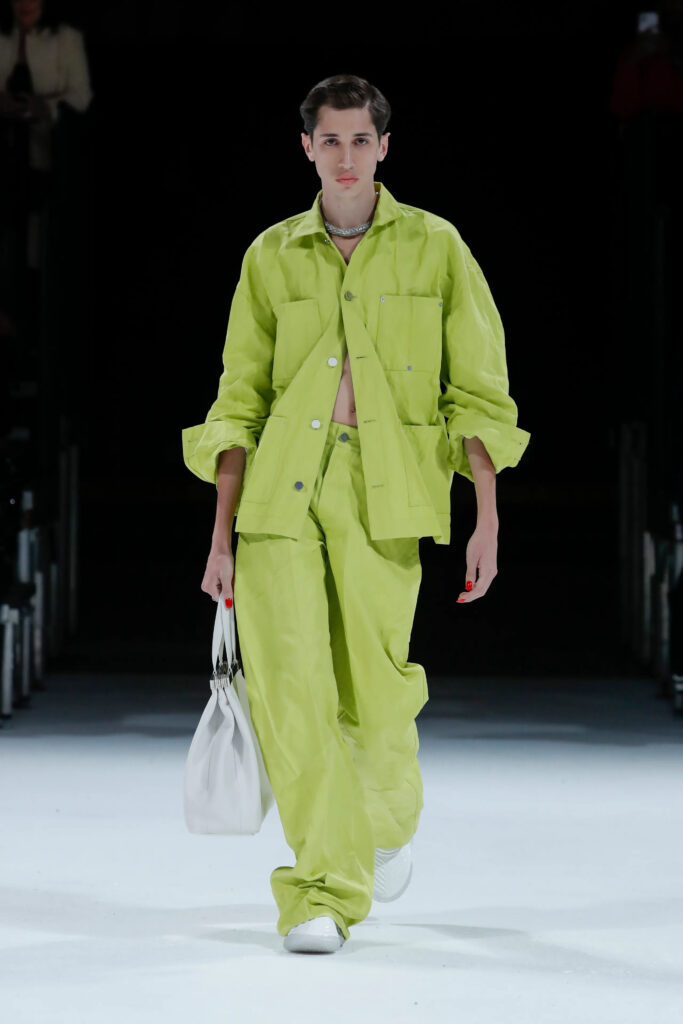
Bottega Veneta SS22 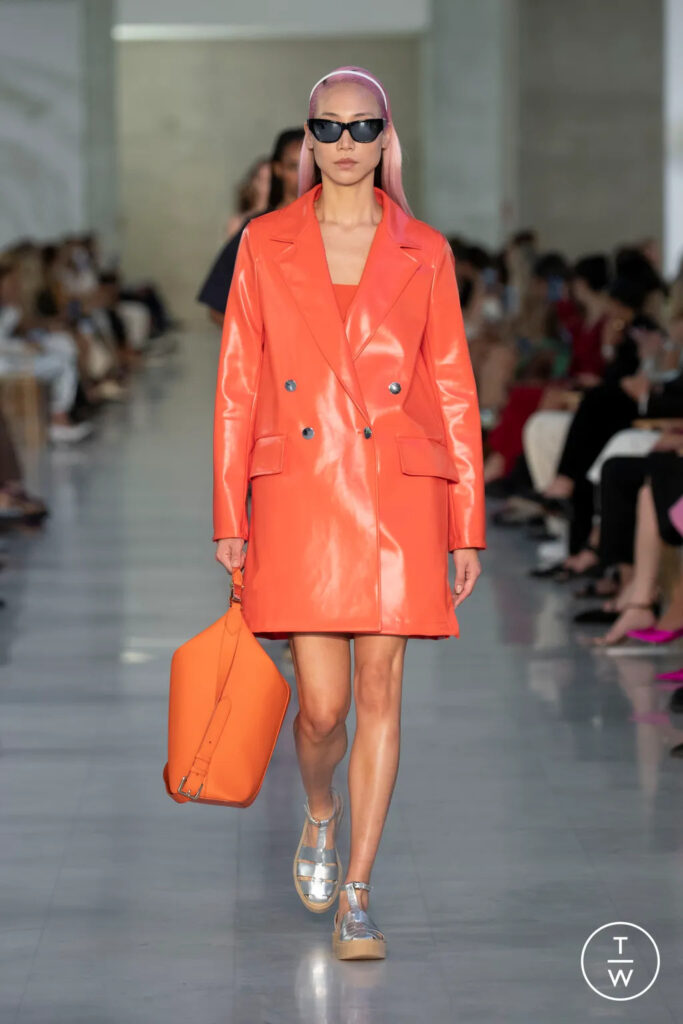
Max Mara SS22
While what we are seeing with cherry red this season is not about monochrome outfits, but the homogeneous spread of red accents across different outfits, we certainly need to consider the recent history of bold colors to justify the rise of red this season. Monochrome has been in style for the last couple of seasons, with monochrome outfits taking over runways since 2021, so why did we not see a spread of the colors proposed by major brands as much as we are witnessing the rise of cherry red this season?
There were several factors blocking the expansion of one specific color these past years, the most important of which is certainly the pandemic: the isolation we went through impeded the creation of a common sense of style, and consequently, no specific color emerged in the fashion scene as much as red does this season.
Cherry Red follows a different diffusion mechanism than the trends that spread in recent years. In fact, starting from the pandemic we have seen a peculiar pattern in trends that affect our daily styles, characterized by an incredible amount of microtrends and overall segmentation into different “aesthetics”. This has made the homogeneous diffusion of trends far more difficult, as trends would spread within closed groups of people, with a low chance of affecting others. For reference, consider the Cottagecore Strawberry Dress and the E-girl style, both trending in 2020 at the same time: their drastic differences in style, colors and textures reflect the different aspirations of their wearers. During the pandemic, people idealized their lives, imagining different realities and adjusting their sense of style according to their fantasies: with no physical confrontation, these separate subcultures remained free of any contamination and resulted in very different and exaggerated aesthetics clashing with each other, despite coexisting in the same time period.
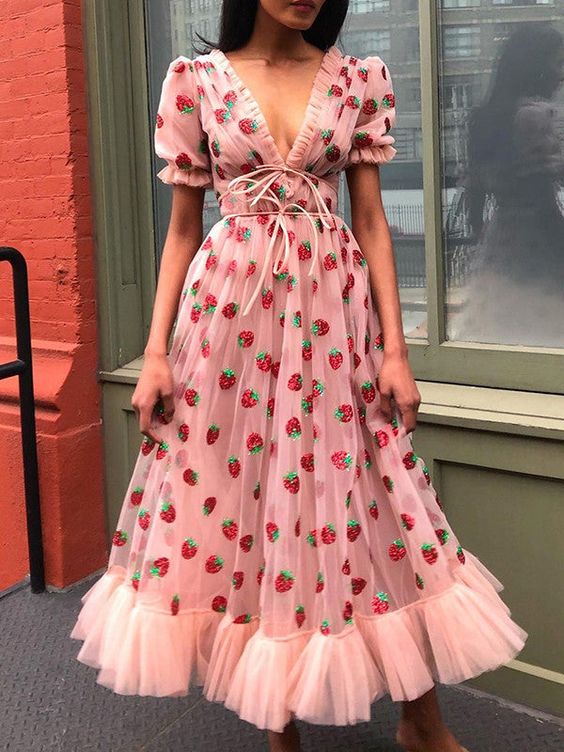
Strawberry Dress 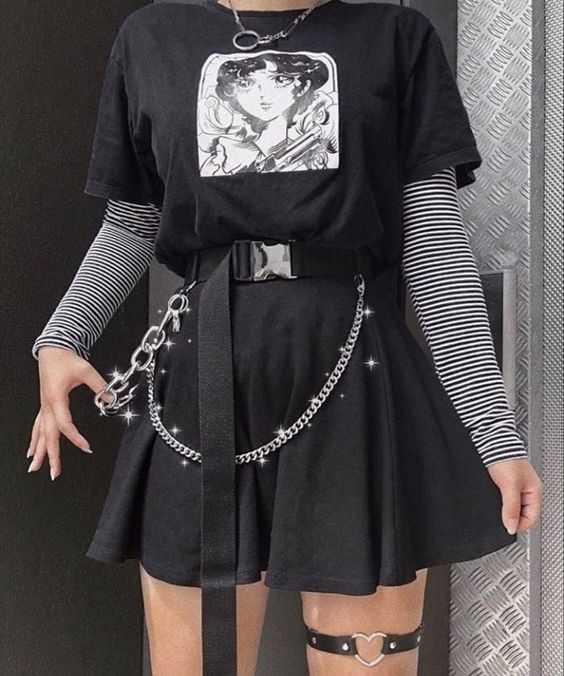
Egirl Aesthetic
If we consider every subculture as separate entities, we can see that trends in the past couple of years have followed a “vertical” pattern of spread: inspired by different influences, people adhered to trends that only involved the group they belonged to. This created a drastic segmentation, encouraged by the desire for belonging and community caused by the isolation during the pandemic. Following the same reasoning, however, we notice that the spread of cherry red has taken another route, influencing different groups of people in a “horizontal” pattern: from Hailey Bieber’s “strawberry girl” trend to Doja Cat’s “Paint the Town Red” outfit and Dua Lipa’s cherry cola hair, red is becoming predominant in almost every category of styles and aesthetics.
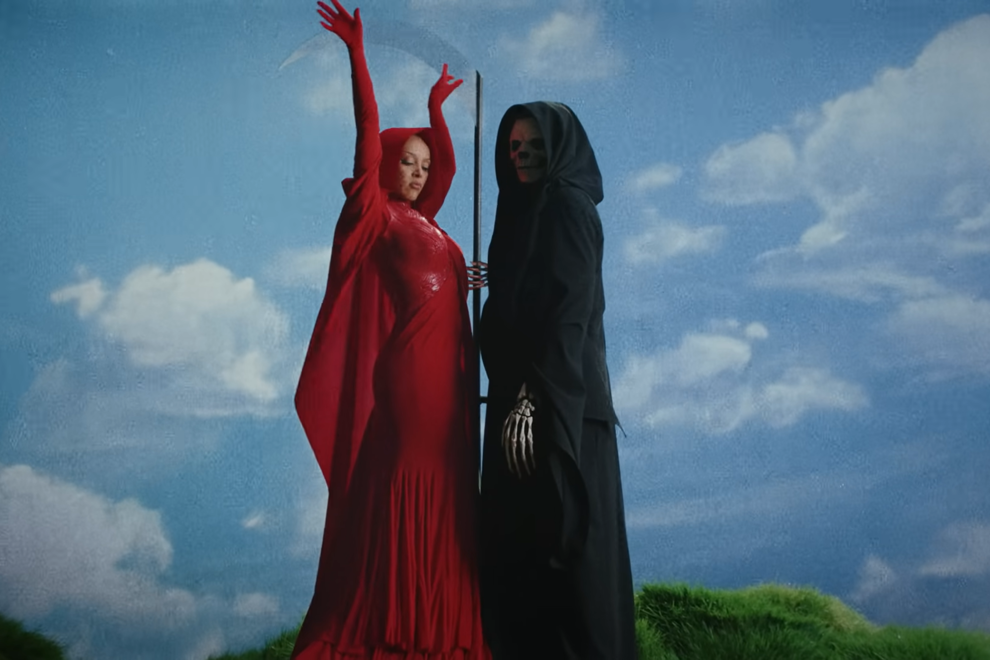
Doja Cat 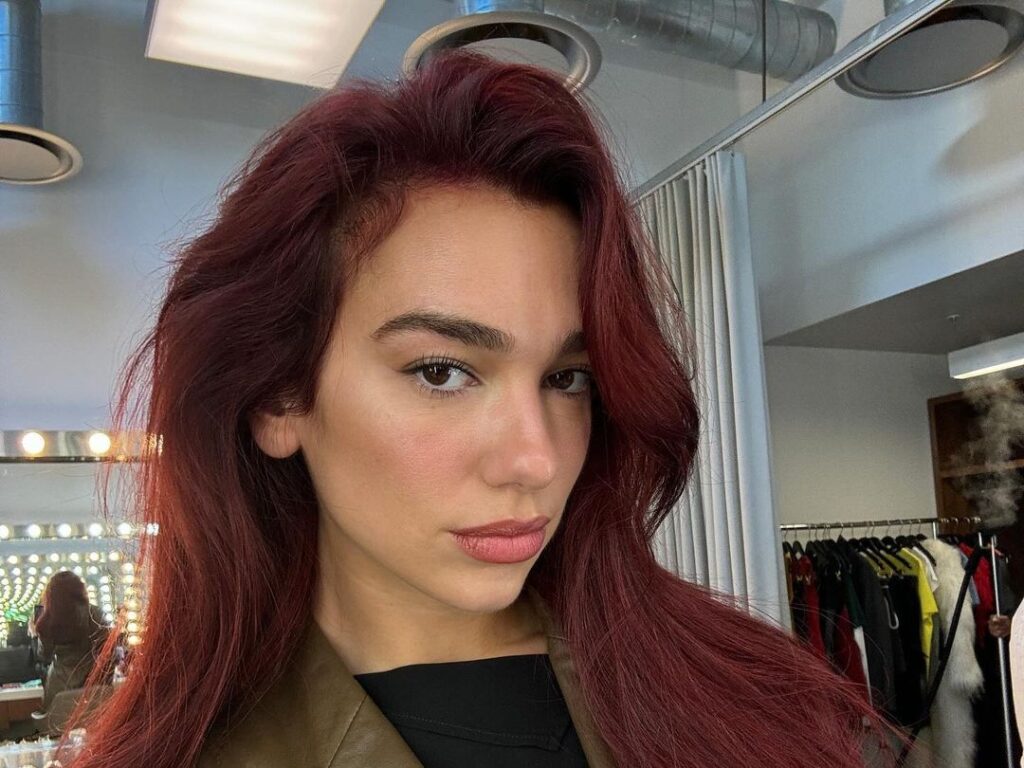
Dua Lipa 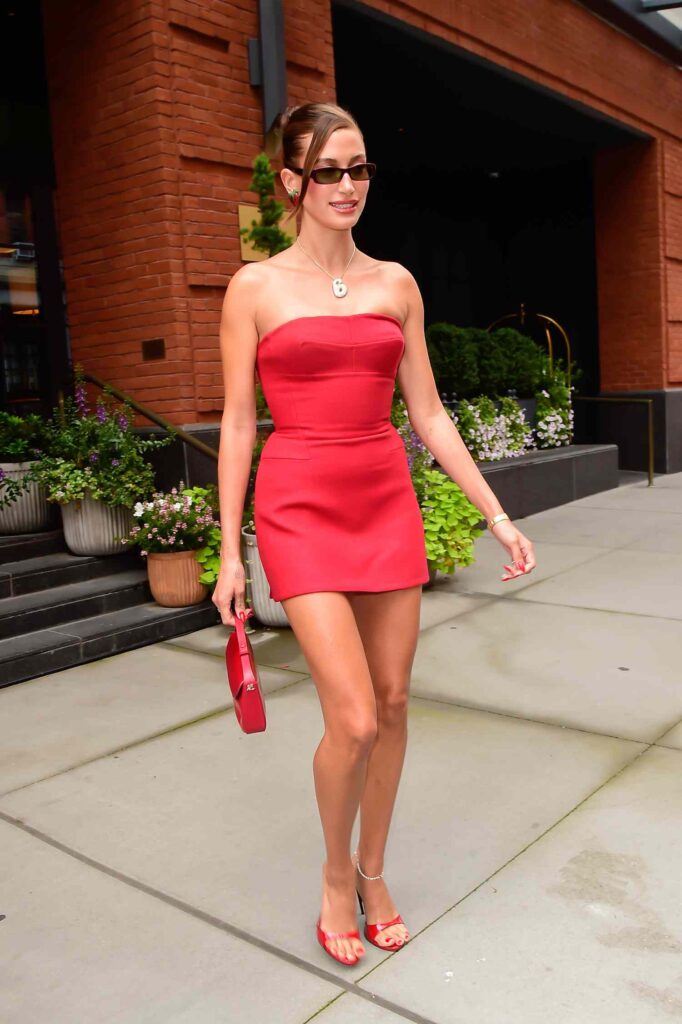
Hailey Bieber
Red is taking center stage now that we have gone back to our pre-pandemic daily routines. However, this represents a break from the overall sense of style that characterizes the end of 2023: our fashion choices this year reflect the need to fit in, to ensure comfort while we go back to our routines outside our homes. For instance, think about the rise of UGG and the “Old Money” aesthetic trending in spring: both represent the rise of more “grounded” aesthetics, and the shift of our sense of style towards more wearable and timeless outfits. In this optic, the popularization of this bright hue of red, especially in fall -a season characterized by mostly subdued shades-, seems counterintuitive. To explain this phenomenon, the contribution of past aesthetics cannot be ignored: the monochrome and bold collections of the last few years, as well as the rise of maximalism during the pandemic, have “trained” our sense of style to see us wearing bright colors on a daily basis, allowing the fast spread of red this fall. Despite the rising popularity of more wearable, timeless outfits we have seen this past year, bright colors seem to be thriving beyond runways this season: although we are leaning back from the maximalism of 2020 and 2021, we are not giving up color, even if it is limited to occasional pops in mainly grounded outfits.
At this point, it is only natural to ask ourselves: why red? While many believe that the reason behind the spread of this trend is its timeless wearability, we cannot ignore the contribution of some other factors when we analyze the rise to popularity of this color.
Firstly, the adaptability of this trend surely determined its fast and homogeneous spread. We need to keep in mind that the differentiation in aesthetic subcultures is still a huge characteristic of the fashion scene today: in this optic, the adaptability of a trend in different “languages” is what can ensure the wideness of its spread. Red is a classic color, but also daring, intense and, in some cases, dark. Red is used as a pop of color in the classic “French girl” aesthetic, but it is easily incorporated in streetwear, as well as vintage outfits and edgier aesthetics. This is because the symbolism of red extends beyond a single interpretation: it symbolizes passion, seduction and love, but also boldness, fierceness, or even satanism and witchcraft, violence and darkness.
The popularization of thrift shopping has played a fundamental role in the spread of red, too: with our sense of style increasingly drifting towards the 90s, it is easy to come into contact with the pops of red that were common during this era. Armani, for instance, presented monochrome red looks in the SS 1992 collection, and in the pop culture scene, red was adopted by the costume designers of many TV shows that are still extremely popular to this day.

Total red look in Armani’s SS1992 collection 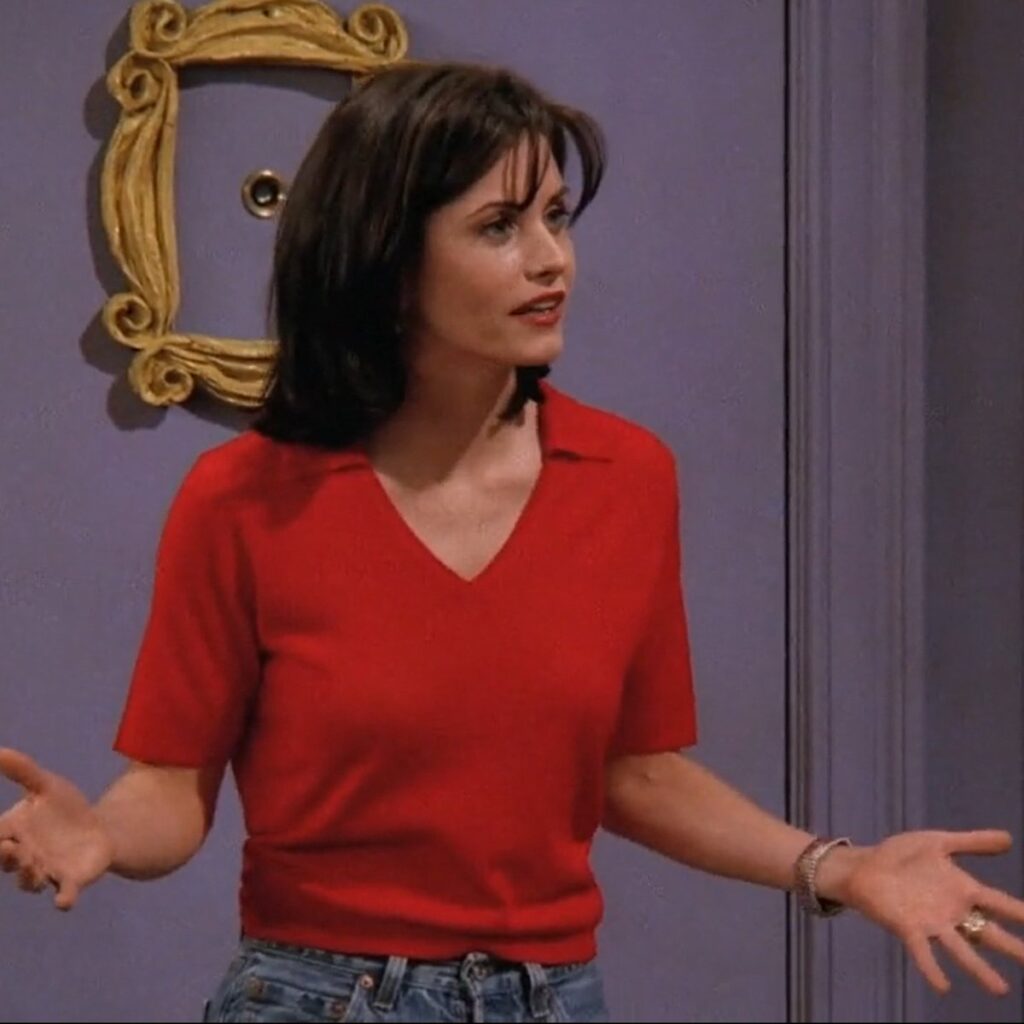
Red tops were continuously used to dress Monica in “Friends”
(1994-2004)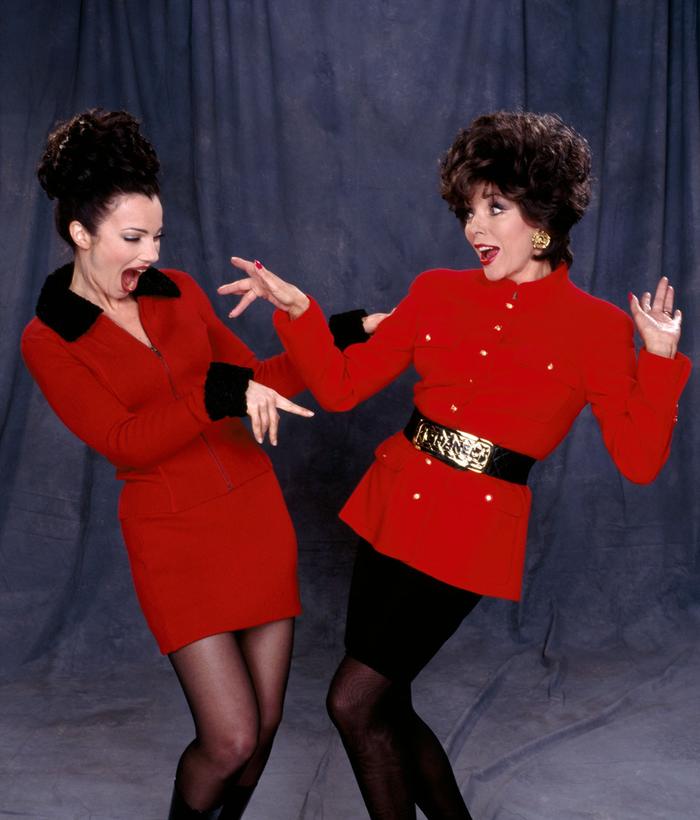
Red costume in “The Nanny” (1993-1999)
However, what the emergence of this trend -and the spreading pattern behind it- can really tell us about the social context we live in is not limited to the icons inspiring our sense of fashion. Red is all about standing out from the crowd, empowering whoever wears this color to claim the spotlight and never go unnoticed. Red is fulfilling the need of a great amount of people to claim their identity, but it is doing so in a different way than the trends we have seen recently: while before we chose to underline our identity through our belonging to every different subcultures, now we claim our spot in a wider community, finding ourselves in a newly opened global community, freed from the barriers of both physical and psychological isolation. What the spread of cherry red really highlights is our choice to give this community a chance, by trying to fit in a world far from the comfort of our homes while never giving up the strong self of identity we have grown over the past few years.
By Chiara Ricciardi
Sources:
Cherry red: the colour for autumn 2023 | L’Officiel Ibiza
Jacquemus RTW Fall 2023 | WWD
The Recent Runways Say Monochrome Isn’t Going Anywhere | Vogue
Valentino Fall 2022 Ready-to-Wear Fashion Show | Vogue
@databutmakeitfashion on Instagram

